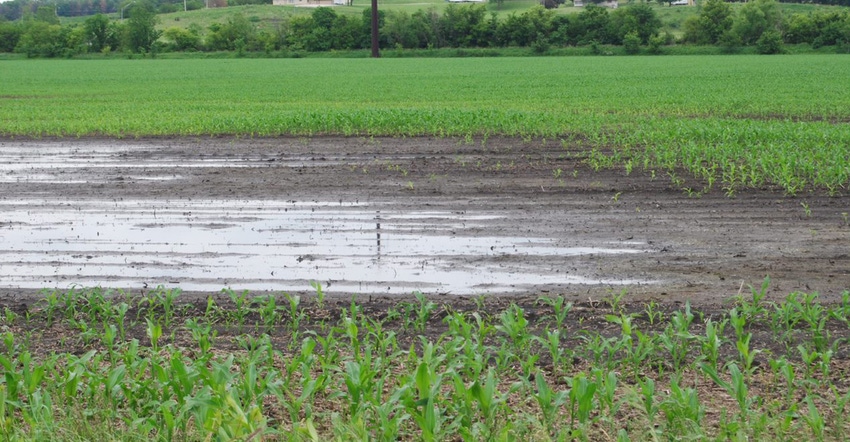July 25, 2019

It’s been a tough year for many farmers. Trade disputes, natural disasters, low commodity prices — the news has been grim. To mitigate the effects of poor market conditions, the federal government has authorized several aid packages for 2019.
MFP program. USDA has announced reauthorization of the market facilitation program, which launched in 2018 to compensate farmers for harm caused by the ongoing trade dispute with China. It has been reported that Iowa farmers, mostly soybean growers, received $988 million from the $12 billion of aid paid under the 2018 program. Some of that money was not paid until 2019. The 2019 program, still short on details as of mid-July, promises up to an additional $16 billion in aid, with up to $14.5 billion taking the form of direct payments.
Disaster relief. In early June, President Donald Trump signed a disaster relief bill into law. This new law authorizes just over $3 billion in direct farm disaster assistance for necessary expenses related to losses of crops (including milk, on-farm stored commodities, crops prevented from planting in 2019, and harvested adulterated winegrapes); trees, bushes, and vines, as a consequence of hurricanes Michael and Florence; and other hurricanes, floods, tornadoes, typhoons, volcanic activity, snowstorms and wildfires occurring in calendar years 2018 and 2019.
Although the law is still short on details, Iowa farmers impacted by flooding may receive disaster assistance for crop damage, which may include, by the special definition in this law, damage to stored grain.
Crop insurance. Farmers impacted by flooding may also receive standard insurance proceeds from crop insurance policies, including payments for prevented planting.
Questions answered
We’ve received questions from farmers regarding the tax rules for these different kinds of payments. Here are our answers to several of the common questions.
If I receive an MFP payment in 2019, do I have to include that in my income for 2019? Can I choose to defer its recognition to 2020? MFP payments are not like crop insurance. Cash basis farmers must report the payments as income in the year they are received. There is no option to defer income recognition. Last year, this rule surprised some farmers who received their payments right before year-end and were required to include the payments in 2018 income.
At the time of this writing, it’s unclear exactly when the projected payments for 2019 (and possibly 2020) will be made. USDA has stated that the 2019 MFP may include three sets of payments, with applications for the first set beginning very soon. If the administration authorizes second and third sets of payments, USDA has stated that those would be made in November and early January.
Farmers should work with their tax advisers to understand the impact of this potential income. MFP payments are intended to replace regular farm income. As such, they are taxed as ordinary income and subject to self-employment tax.
What happens if I receive a crop insurance payment or a disaster program payment in 2019? Generally, cash basis farmers must include proceeds from crop insurance and federal disaster programs in gross income for the tax year during which they receive the payments. These payments are ordinary income, subject to self-employment tax.
A special law, however, provides a deferral option for insurance proceeds received as a result of “destruction or damage to crops,” IRC § 451(f). Farmers who meet the requirements of this law may elect to include the proceeds in gross income for the tax year following the destruction or damage. This one-year deferral protects farmers from recognizing excessive income in one year when their regular practice would have been to sell the crop in the following tax year. In other words, it protects against income bunching, which may push a farmer into a higher tax bracket.
How does the deferral provision apply to disaster payments? The special IRC § 451(f) deferral election applies to “insurance proceeds” received as a result of “destruction or damage to crops.” It also applies to disaster payments received from the federal government. Pursuant to IRS regulations, disaster payments paid as a result of damage caused by drought, flood or any other natural disaster, or the inability to plant crops because of such a natural disaster (prevented planting payments) are treated like crop insurance proceeds. In other words, farmers may elect to defer those disaster payments if they otherwise meet the requirements.
Does this law mean I can always defer crop insurance payments to the year following receipt? No. Deferral is only an option for farmers who (1) report income on a cash (not accrual) basis and (2) establish that under normal business practice; income from the crops would have been included in gross income for any taxable year following the tax year of the destruction or damage.
Also, if crop insurance is not paid until the year following the damage, the income must be recognized in the year of receipt. Deferral is only an option if the proceeds are paid in the year of the damage.
It’s important to note that courts have ruled that to establish a normal business practice, the taxpayer must establish that he or she would have, under normal practice, sold a substantial portion of the crop in the year following damage. This has been interpreted to mean more than 50% of the income.
Can I pick and choose, as in defer recognition of some of the income and recognize some of it in the year of receipt? No. The crop insurance deferral provision is an all-or-nothing election, unless the farmer operates multiple trades or businesses. In other words, a taxpayer who has a history of selling 60% of his or her grain in the year of harvest and 40% in the following year cannot allocate income recognition between two years to simulate a normal business practice. Such a farmer is ineligible to defer crop insurance income. Likewise, the farmer cannot elect to defer recognizing income for soybeans but recognize income for corn.
Are all crop insurance payments eligible for deferral? No. The deferral election applies only to payments received for “destruction or damage to crops.” Income from payments made to compensate farmers for reduced revenue or losses unrelated to destruction cannot be deferred. Because many policies include a revenue component, farmers must determine whether any portion of an insurance payment is intended to compensate for revenue loss, not crop damage. If so, the income from that portion of the payment may not be deferred.
Is it always best to elect to defer recognition of insurance payments until the following crop year? No. Farmers receiving crop insurance or disaster payments in 2019 should not automatically elect deferral. It is an option that should be studied considering other 2019 income, income averaging options, expenses, deductions and expected 2020 income. Farmers should work with their tax advisers to make the best decisions for their situations.
For more information, visit the CALT website.
Tidgren is an attorney and director of the Center for Ag Law and Taxation at ISU. Contact her at [email protected].
About the Author(s)
You May Also Like






